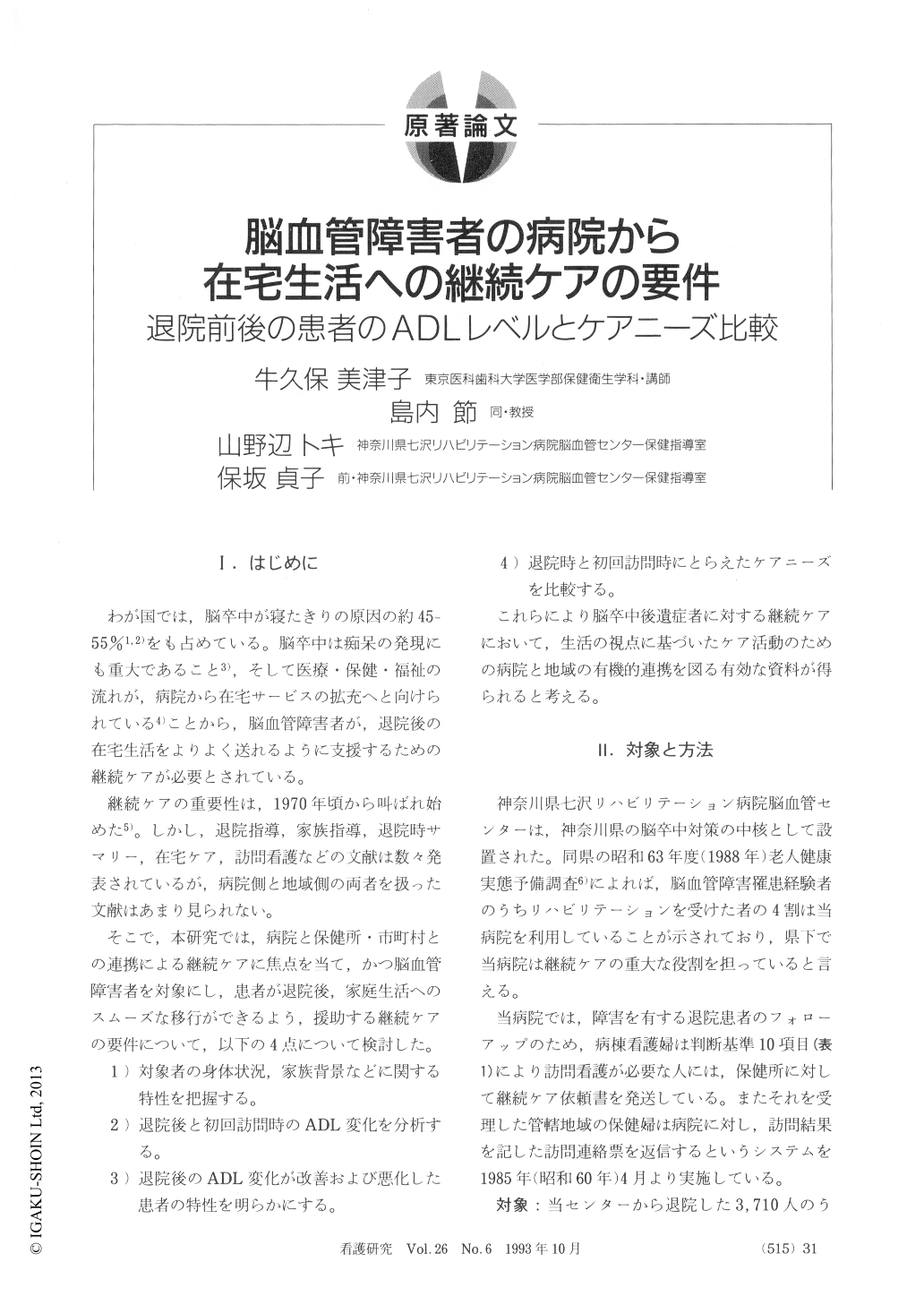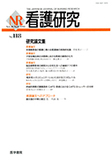Japanese
English
- 有料閲覧
- Abstract 文献概要
- 1ページ目 Look Inside
- サイト内被引用 Cited by
Ⅰ.はじめに
わが国では,脳卒中が寝たきりの原因の約45-55%1,2)をも占めている。脳卒中は痴呆の発現にも重大であること3),そして医療・保健・福祉の流れが,病院から在宅サービスの拡充へと向けられている4)ことから,脳血管障害者が,退院後の在宅生活をよりよく送れるように支援するための継続ケアが必要とされている。
継続ケアの重要性は,1970年頃から叫ばれ始めた5)。しかし,退院指導,家族指導,退院時サマリー,在宅ケア,訪問看護などの文献は数々発表されているが,病院側と地域側の両者を扱った文献はあまり見られない。
Thanks to the advancement of medical technology, there has been a significant decline in stroke mortality in Japan. This means that many stroke victims could gain additional years of survival with several disabilities. It is necessary that nurses assist these disabled patients upon discharge for shifting smoothly from the hospital to the home.
The purpose of this study was to clarify the factors of continuity of care for the disabled patients who has had a stroke, between hospital and community. The 504 patients who were discharged from the Kanagawa Prefectural Rehabilitation hospital and were in need of visiting nursing services upon their discharge were selected in this study. The survey was conducted through discharge summaries and visiting nursing reports. The data were compared at discharge with the first nursing visit with respect to the level of independence in activities of daily living (ADL) and their care needs.
The results were summarized as follows :
1. As for the functional level of ADL, most patients remained unchanged. Feeding was improved; however, grooming (including bathing), using the toilet, and dressing were worse. Hence, hospital nurses should strongly educate the patients and repeat ADL so that dressing is a rehabilitation exercise itself. Also, nurses, prior to discharge, should consider dealing with the housing problems, especially in the bathrooms and washrooms, due to the patients' physical disabilities. Nurses should pay particular attention to the aged group upon the continuity of care since their level of independence in walking changed variously among individuals.
2. Hospital nurses identified nursing problems mostly in the physical aspects, whereas public health nurses did it in terms of family-caregivers and social resources rather than physical needs. The reasons why nursing problems did not correspond between hospital nurses and public health nurses were probably owing to the differences in their practice settings, job content, and working conditions between the hospital and community. Thus, both nurses should reciprocally provide one's information and introduce other's information in order to understand and employ the other's standpoints.

Copyright © 1993, Igaku-Shoin Ltd. All rights reserved.


